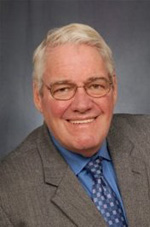by Jack Cassidy & Stephanie Grote-Garcia
 In 1996, the idea for the first survey was hatched (Cassidy & Wenrich, 1997); no one at the time realized that the list would become an annual fixture. The results of the survey are routinely cited at conferences and in a variety of publications. Various editions of the survey have been translated into Spanish and replicated in individual states in the U.S. With some modifications, the survey has also been replicated in the United Kingdom, Denmark, Romania, and Europe as a whole. More in-depth discussions of the survey began appearing in 1998 (Cassidy & Wenrich, 1998-99) and over the years have appeared in a variety of venues. This year is no exception (Cassidy, 2012; Cassidy & Grote Garcia, 2012; Cassidy & Ortleib, 2012; Cassidy & Valadez, 2012).
In 1996, the idea for the first survey was hatched (Cassidy & Wenrich, 1997); no one at the time realized that the list would become an annual fixture. The results of the survey are routinely cited at conferences and in a variety of publications. Various editions of the survey have been translated into Spanish and replicated in individual states in the U.S. With some modifications, the survey has also been replicated in the United Kingdom, Denmark, Romania, and Europe as a whole. More in-depth discussions of the survey began appearing in 1998 (Cassidy & Wenrich, 1998-99) and over the years have appeared in a variety of venues. This year is no exception (Cassidy, 2012; Cassidy & Grote Garcia, 2012; Cassidy & Ortleib, 2012; Cassidy & Valadez, 2012).
Over the last 16 years, a variety of topics have been identified as “hot” (i.e., the center of current attention). Some remain “hot” for numerous years; some stay “hot” for a short time; and others make frequent visits between the “hot” and “cold” lists. The appearance of an item on the “cold” list indicates that the item is currently not receiving attention and therefore, “not hot."
 Selecting the Topics
Selecting the Topics
One item that is consistently changing is the survey itself, more specifically the topics featured on the survey. Each year, the survey changes slightly―some years more than others. The original survey consisted of topics found in timely academic publications and other popular media, such as magazine and newspaper articles. The International Reading Association’s Director of Research at the time was also consulted and assisted in finalizing the first survey, which then provided an evolving platform for the next 15 surveys. After the first year, the survey has been constructed by asking the respondents of the prior year to make modifications, additions, and deletions to the topics on the survey. Based on those suggestions, the new survey is formed. This year’s survey was collaboratively formed by 24 of last year’s 25 respondents. Two topics were added (formative assessment and text complexity) and two topics were deleted (curriculum-based assessment and scientific evidence-based reading research and instruction). Efforts are made to keep the total number of topics between 25 and 30.
Conducting the Survey
The “hot” and “cold” lists may have seen several changes in the last 16 years, but two things have almost always remained the same―the method used to select the survey respondents and the manner in which the survey has been conducted.
Each year 25 literacy leaders are surveyed to identify the “hot” and “not hot” topics in the field. The only exception was the first year when 22 leaders were surveyed instead of 25. The selected leaders form a very diverse group. They not only represent various job categories (e.g., professors, administrators, and classroom teachers), but are also from various geographical regions found within the International Reading Association’s global membership. The percentage of IRA members in a given area determines the number of literacy leaders interviewed from that area. In addition, and most importantly, the survey respondents are selected because they possess a comprehensive perspective of literacy and in most cases have made significant contributions to the literacy field.
Not only has the selection process for respondents stayed consistent, so has the manner in which the survey is conducted. During the spring and summer months the literacy leaders are interviewed, either in person or by phone. All are read a standard 178-word paragraph explaining that their ratings of “hot” and “not hot” do not reflect their personal interests, rather the ratings refer to the level of attention that the topics are currently receiving. The respondents are then asked to rate each of the given topics as either “hot” or “not hot” along with whether each topic “should be hot” or “should not be hot”. In other words, should the item be receiving attention at the current time? Originally respondents were not asked if the given topic “should be hot”. This was added to the survey in the year of 2000.
After all 25 surveys are completed, the collected ratings are tallied. Topics identified by at least 75% of the respondents as currently receiving attention are recognized as “very hot”. This process is the same for identifying topics that “should be hot."
Replicating the Survey
As always, the authors are receptive to helping scholars replicate the survey. Last year, one young scholar used the survey with only with beginning professors starting their career. For help with replicating the survey, contact dr.jackcassidy@gmail.com.
References
Cassidy, J. (2012), Trends and issues in literacy: What’s hot. In J. Cassidy & S. Grote-Garcia (Eds.) Literacy trends and issues: What’s hot (pp.13-17). Dubuque, IA: Kendall Hunt.
Cassidy, J. & Grote-Garcia, S. (Eds.). (2012). Literacy trends and issues: What’s hot. Dubuque, Iowa: Kendall Hunt.
Cassidy, J. & Ortlieb, E. (2012). Looking at literacy in the 21st Century, The Clearing House: A Journal of Educational Strategies, Issues and Ideas, 85:4, 141-145.
Cassidy, J & Valadez, C. (2012) A focus on literacy trends and issues today. In R. Flippo (Ed.), Reading researchers in search of common ground:the expert study revisited. (pp.257-273). Routledge: NY.
Cassidy, J., & Wenrich, J. (1998/99). Literacy research and practice: What’s hot, what’s not, and why. The Reading Teacher, 52, 402-406.
Cassidy, J., & Wenrich, J. (1997). What’s hot and what’s not for 1997: A look at key topics in reading research and practice. Reading Today, 14 (4), 34.
Jack Cassidy is a former president of the International Reading Aassociation, the Texas Association for Literacy Education, the College Reading Association and the Diamond State Reading Association. Stephanie Grote-Garcia is an assistant professor at the University of the Incarnate Word in San Antonio and the treasurer of the Texas Association for Literacy Education.
The full 2013 What's Hot, What's Not Literacy Survey results were published in the August/September 2012 issue of Reading Today. Members: click here to login and access the issue. Nonmembers: join IRA now!
Reading Today Issue with 2013 What's Hot, What's Not Article for IRA Members
Resources from the International Reading Association
Join the International Reading Association